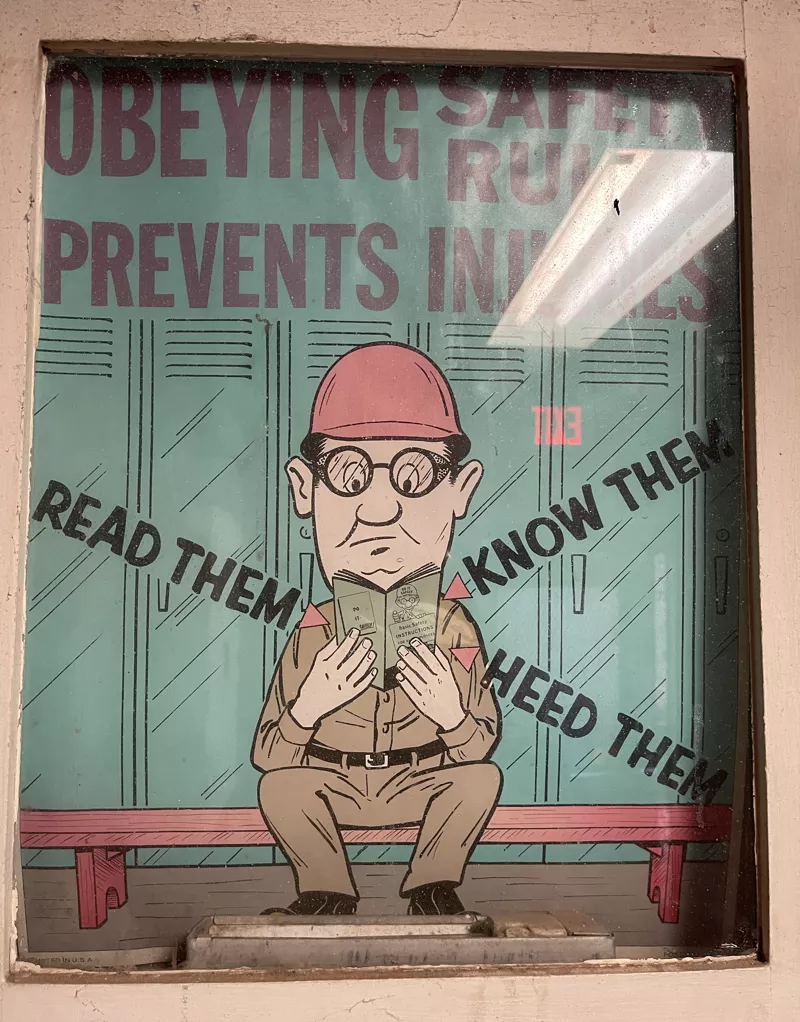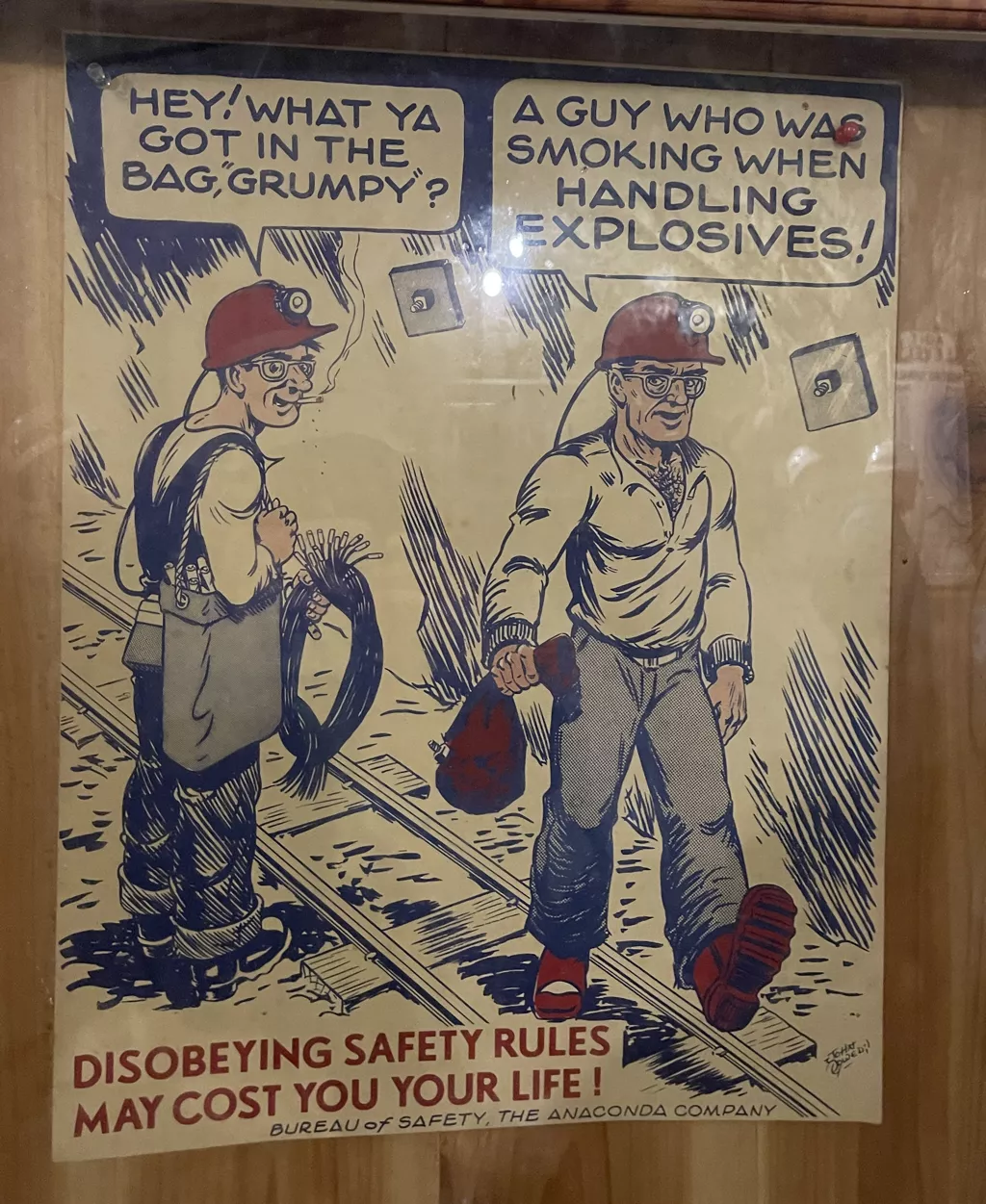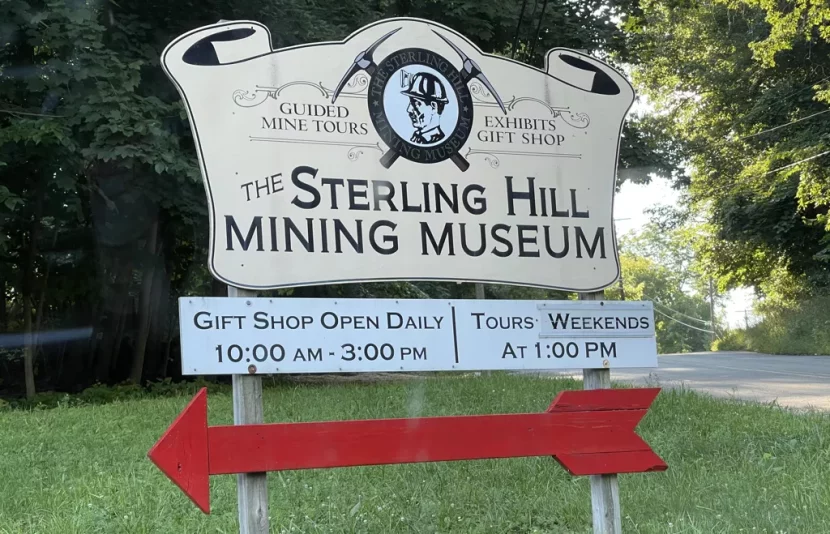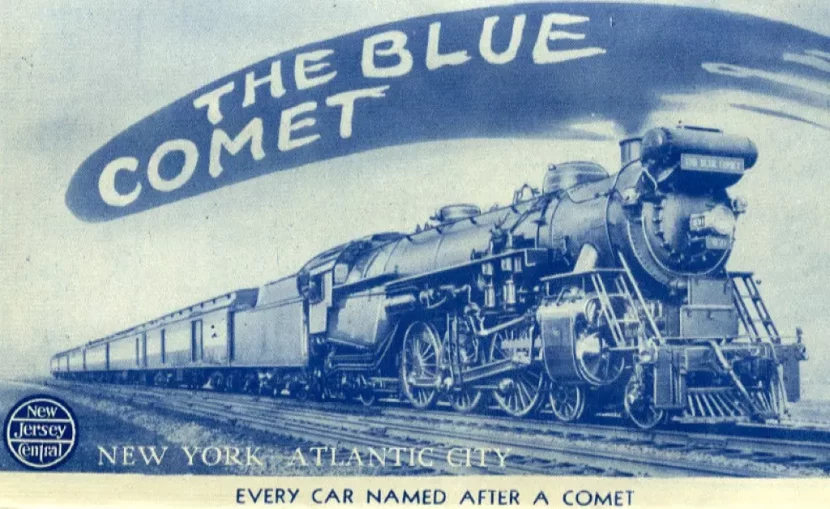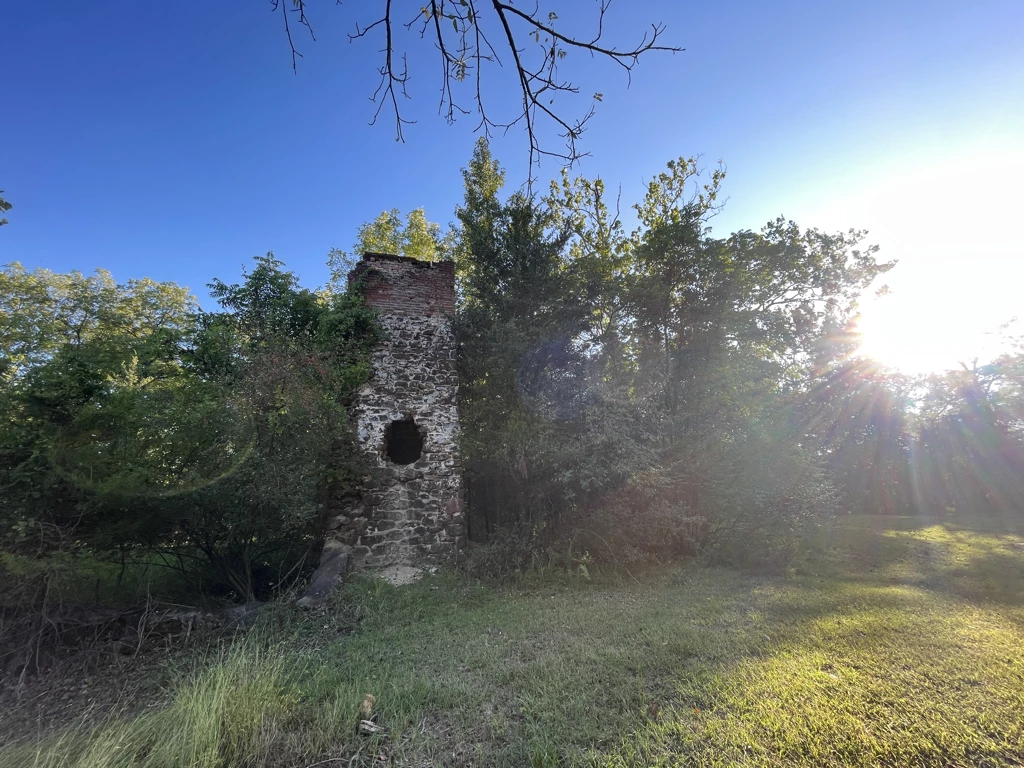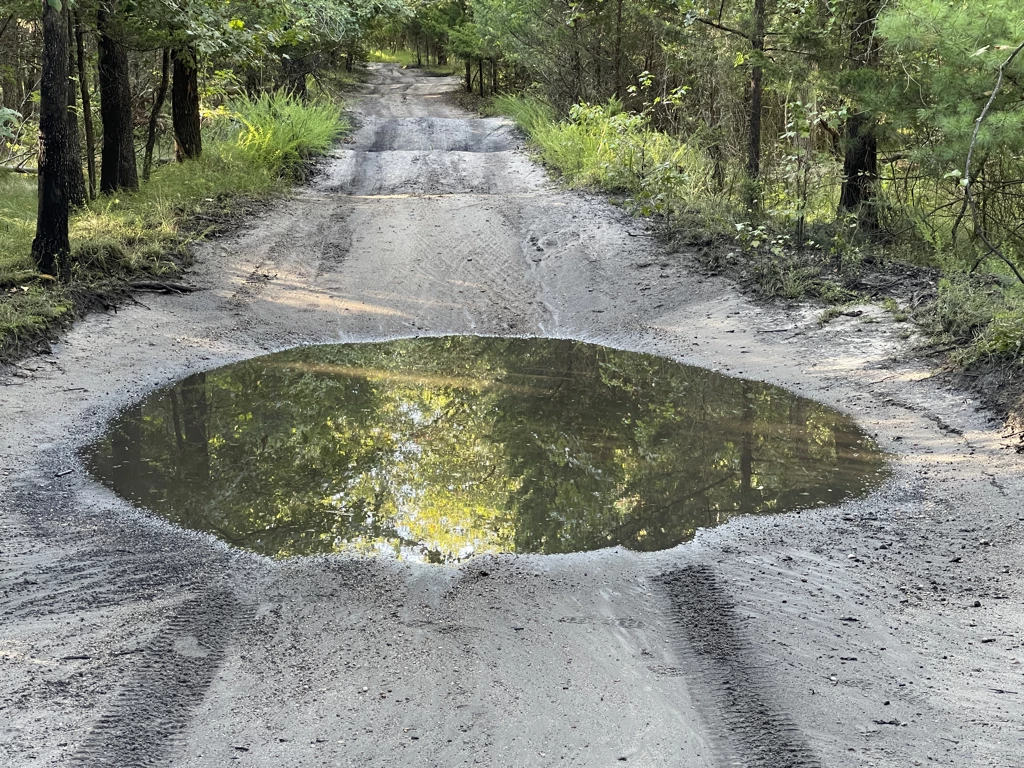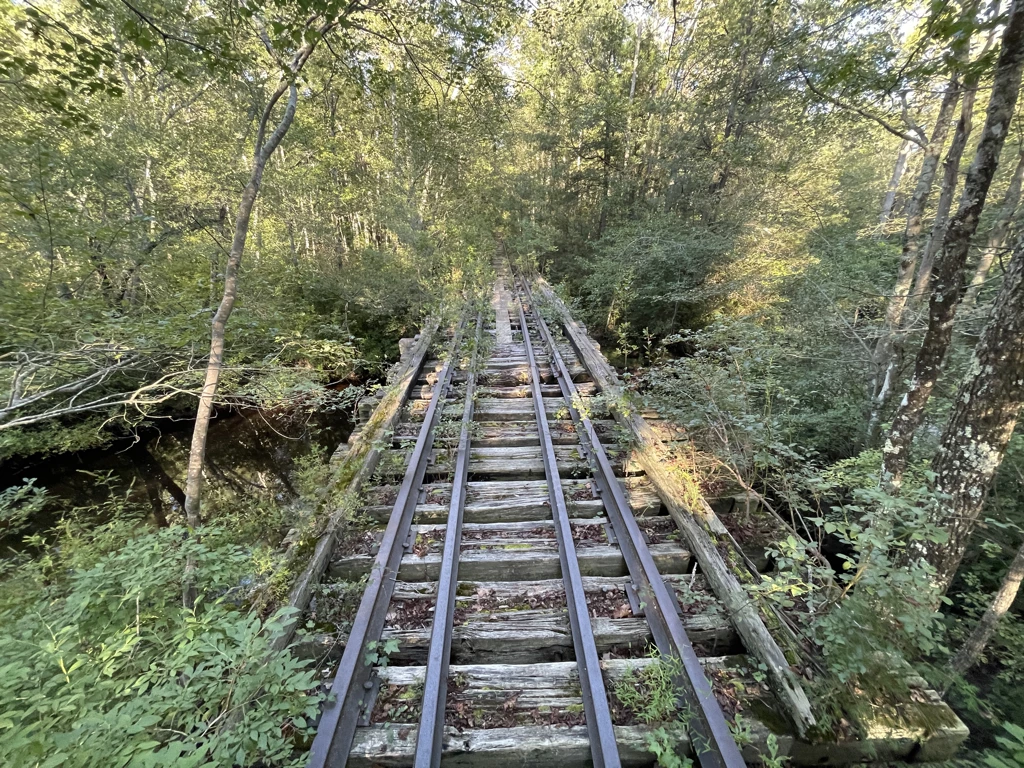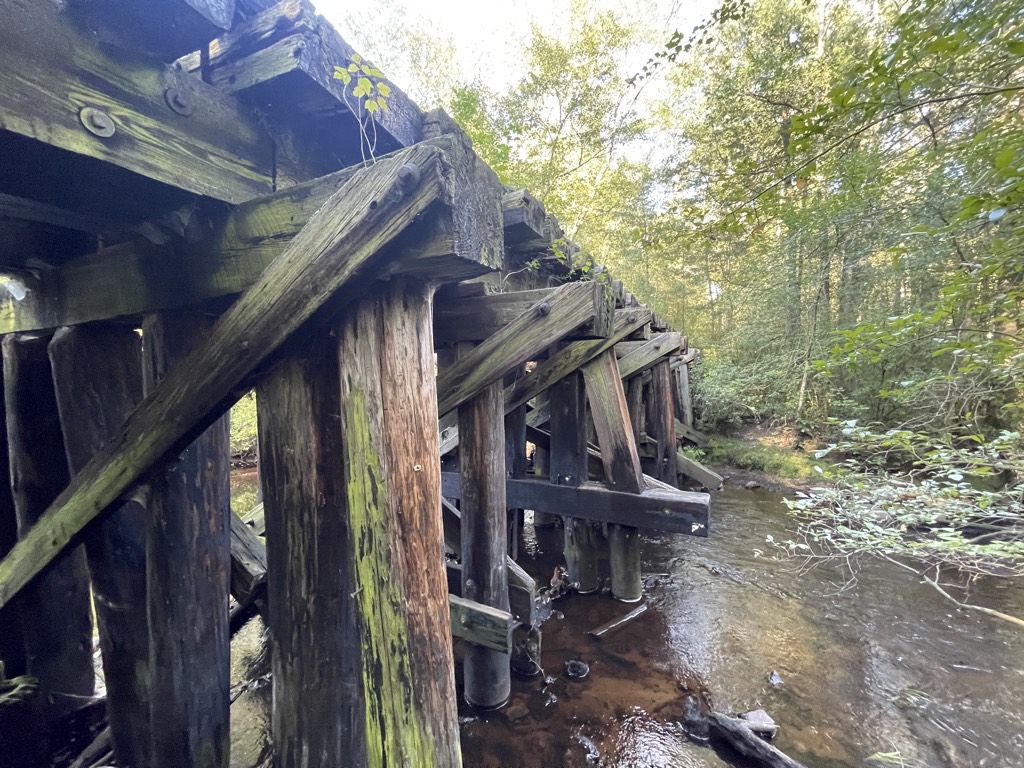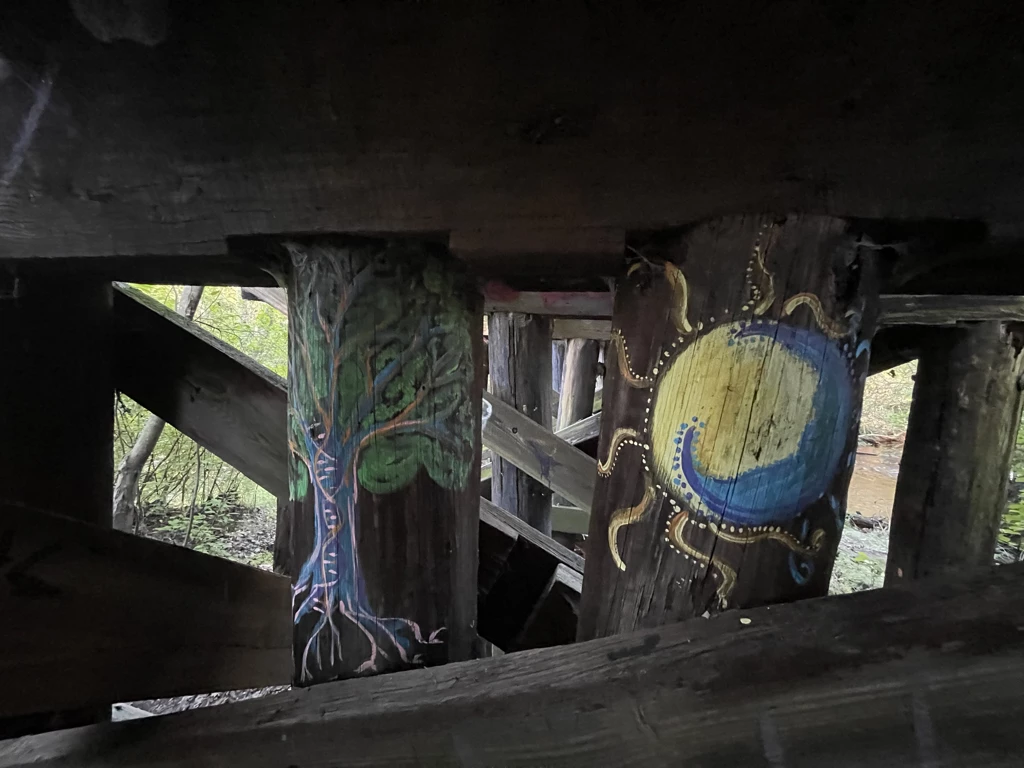The Sterling Hill Mining Museum, located in Ogdensburg, New Jersey, offers visitors a tour of an old zinc mine, a large mining and mineral museum, and an opportunity to collect fluorescent minerals from a dump of rocks left over from mining operations. If you have an interest in mining, geology, rock collecting, or New Jersey history, it is worth a visit. Ogdensburg, and Franklin to its north, are internationally known for the variety of fluorescent minerals and the New Jersey state mineral Franklinite, which is a non-fluorescent zinc ore.
Note the variety of colors found in the rocks a the bottom of this photo. Even in daylight, these massive rocks are colorful — under a shortwave UV light, even more so.
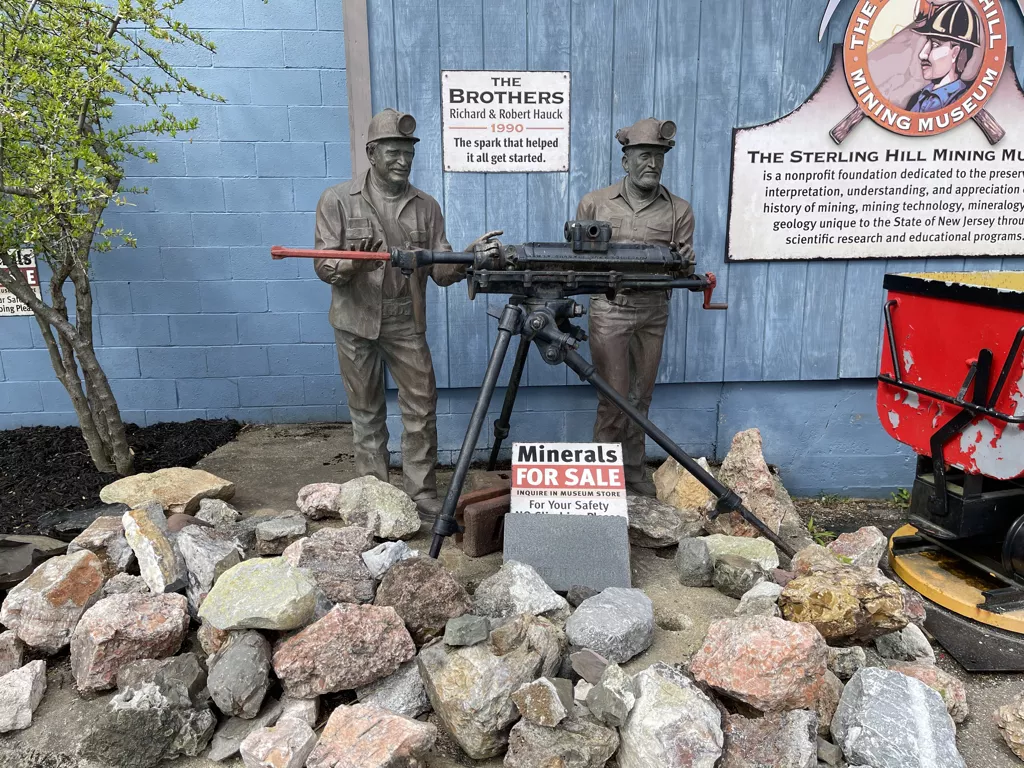
One of the entrances to the mine is on the side of the mountain. The mountain is named Sterling Hill.
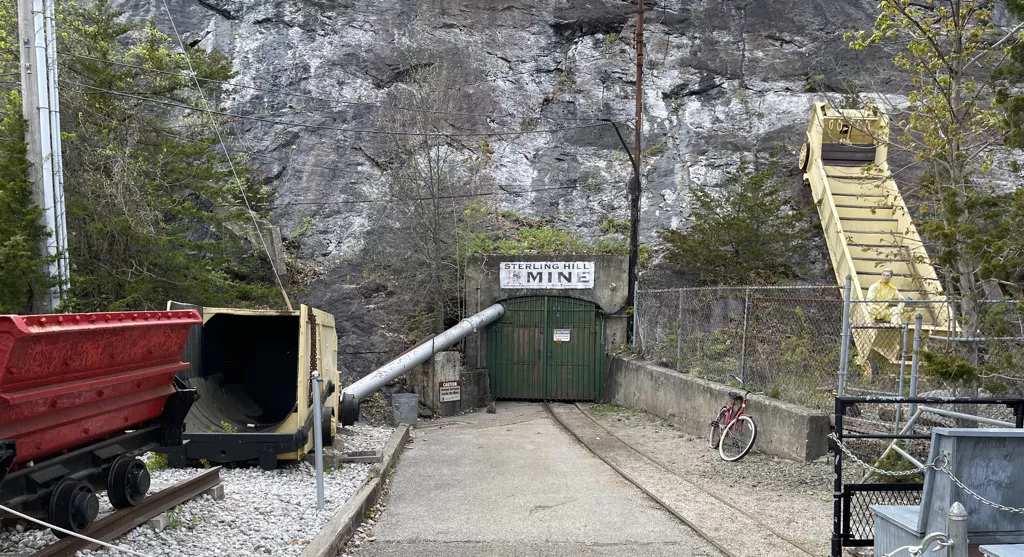
The mine is a half-mile deep, but it is mostly filled with water. The tour guide takes you only through the top levels of the mine. There is no danger of falling to lower levels and drowning. But just imagine falling into a pool of water as deep as the Empire State Building in total darkness — not that’s a horror movie!
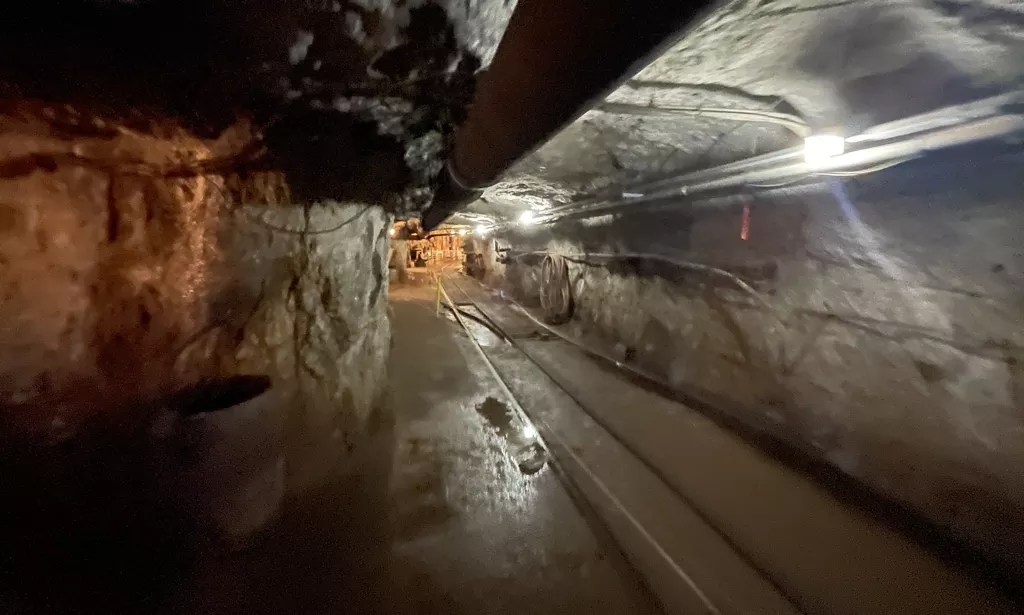
Look down a corridor and you’ll see mining equipment and a room where explosives were stored. Along the tour you’ll see mannequins handling assorted mining equipment like drills and jackhammers, setting dynamite charges, and riding an ore elevator.
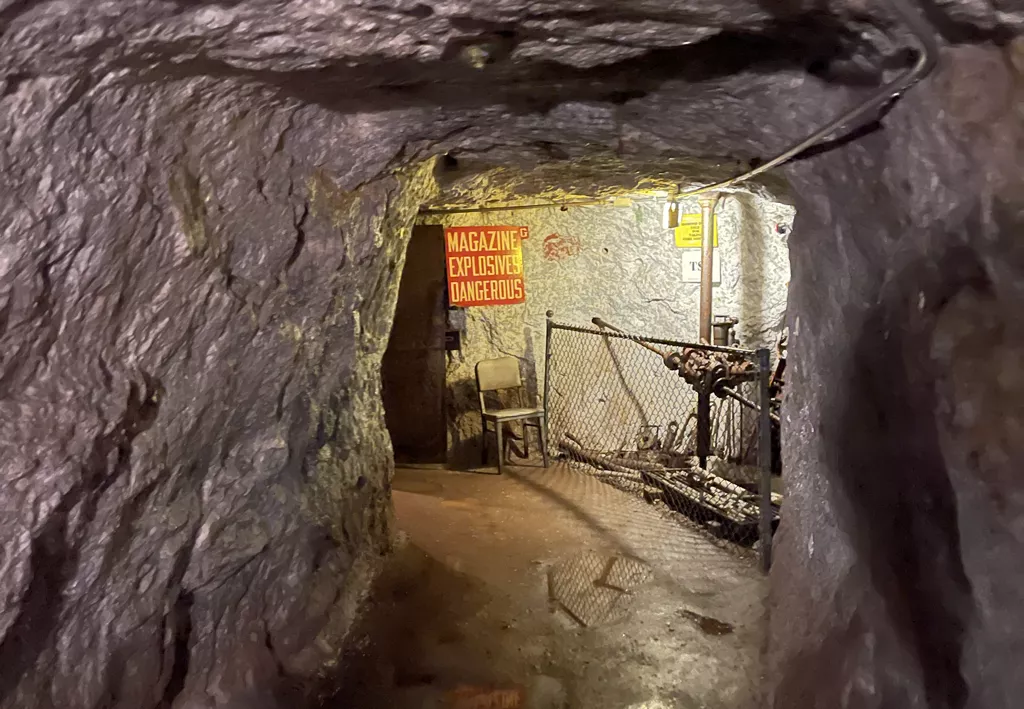
Two large slabs of rock fluorescing orange and green under shortwave ultraviolet light. The walls of the mine behind the slabs also fluoresce. Most of the orange is calcite and the green is willemite, although these are not the old minerals that fluoresce these colors. Under white light, calcite is usually white to gray, and willemite is red or green.
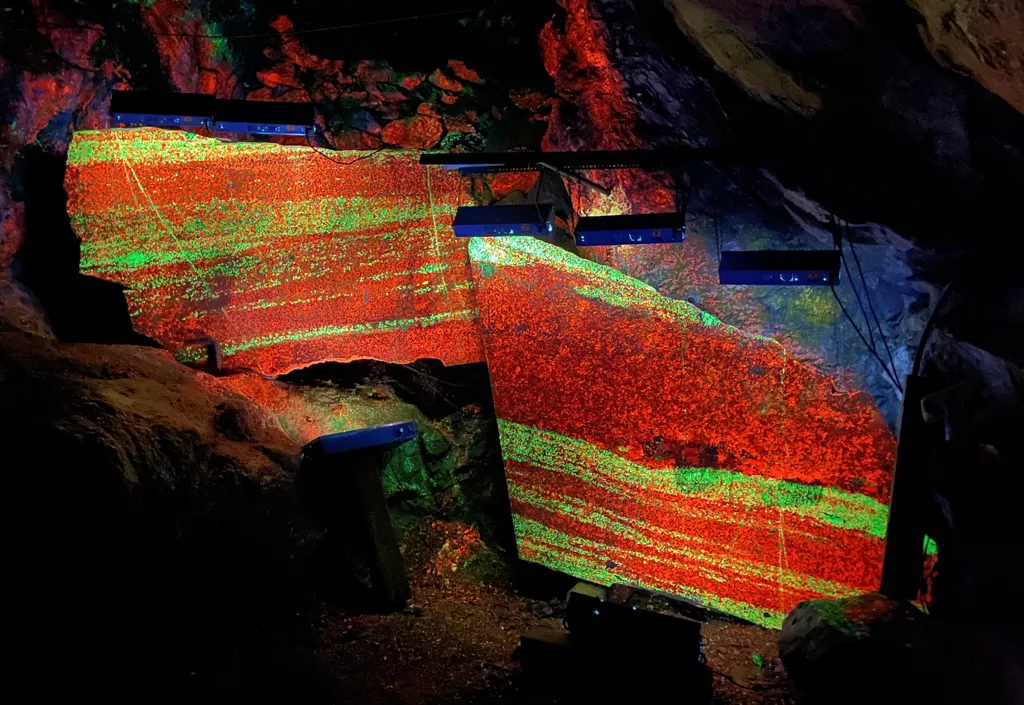
This is the “rainbow room” portion of the tour, featuring an anticline of green, orange, purple, and green again fluorescing rock, with a large pile of loose rocks of differing colors in front of it. Not to be missed! In the museum, there are many rooms of fluorescing rocks to explore.
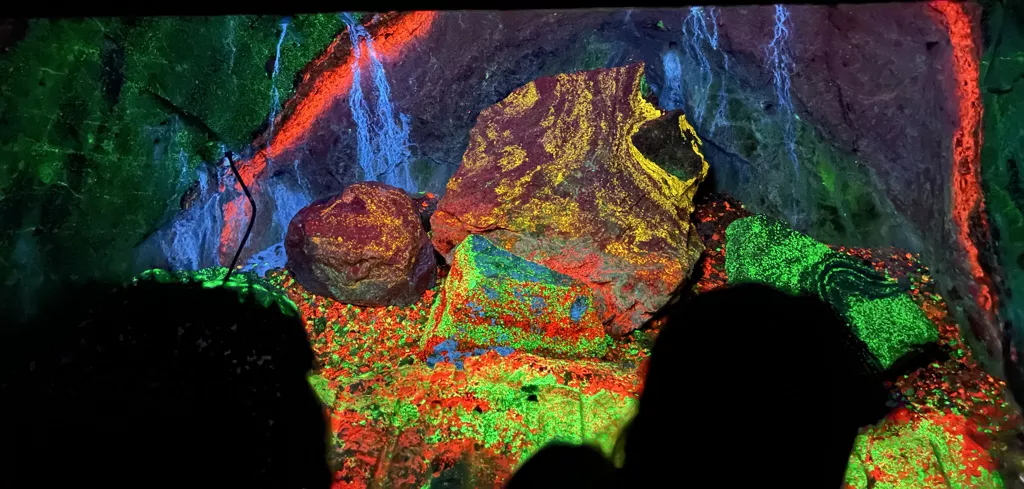
Dynamite was used to break through the solid rock of the mountain to create tunnels and get the ore down to a liftable size. The museum has an impressive collection of detonators that were used to trigger explosions from a safe distance.
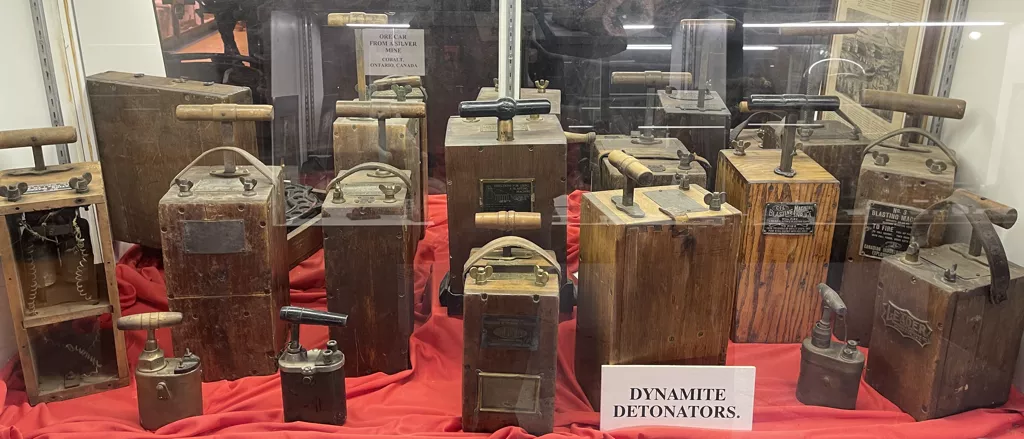
A bust of a happy miner with his mining lamp surrounded by actual carbide mining lamps. Originally miners wore hats fitted with candles.
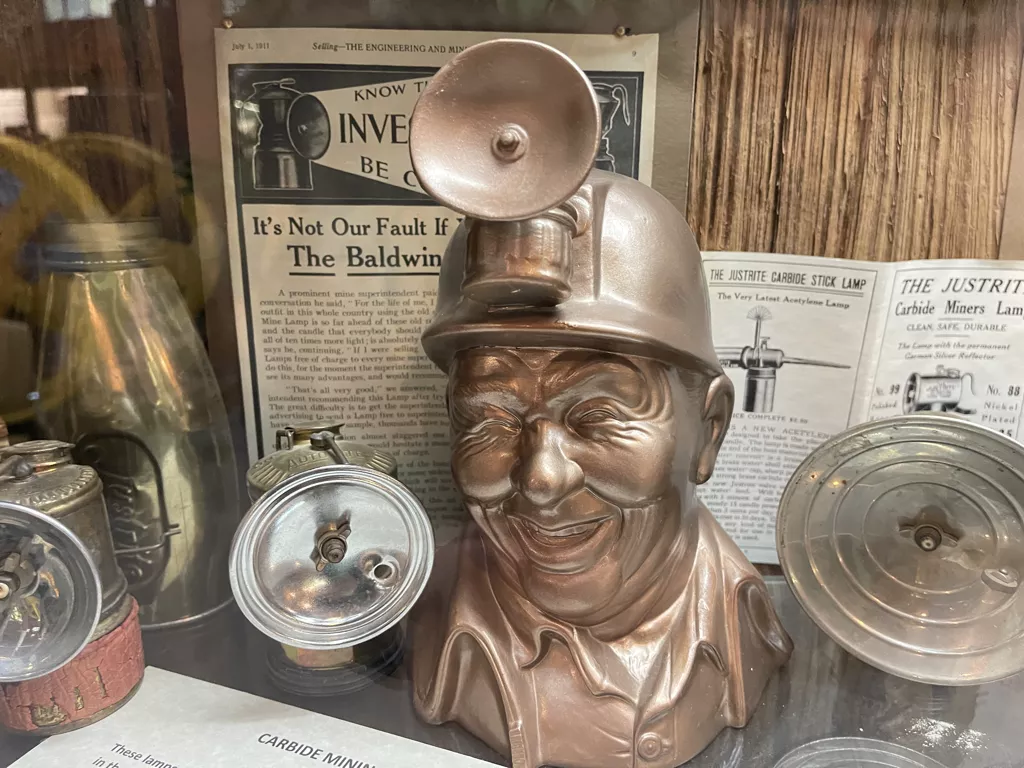
Safety first! Some mine safety cartoons from the mine tour and museum. I smacked my head on the walls of the mine a few times, so be careful. 🙂
